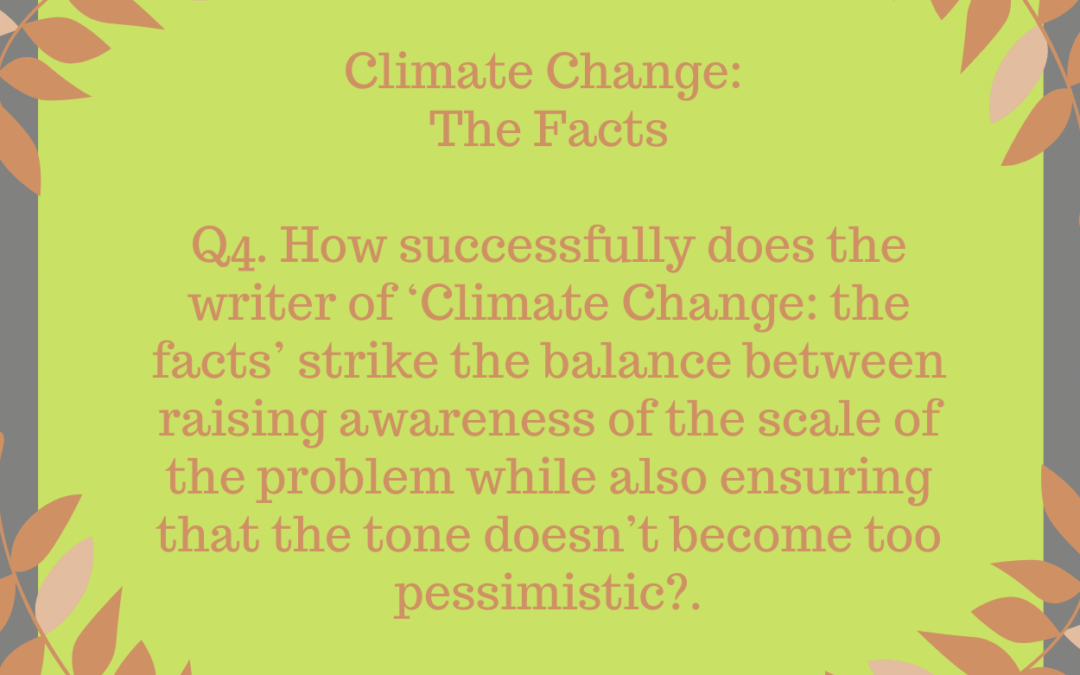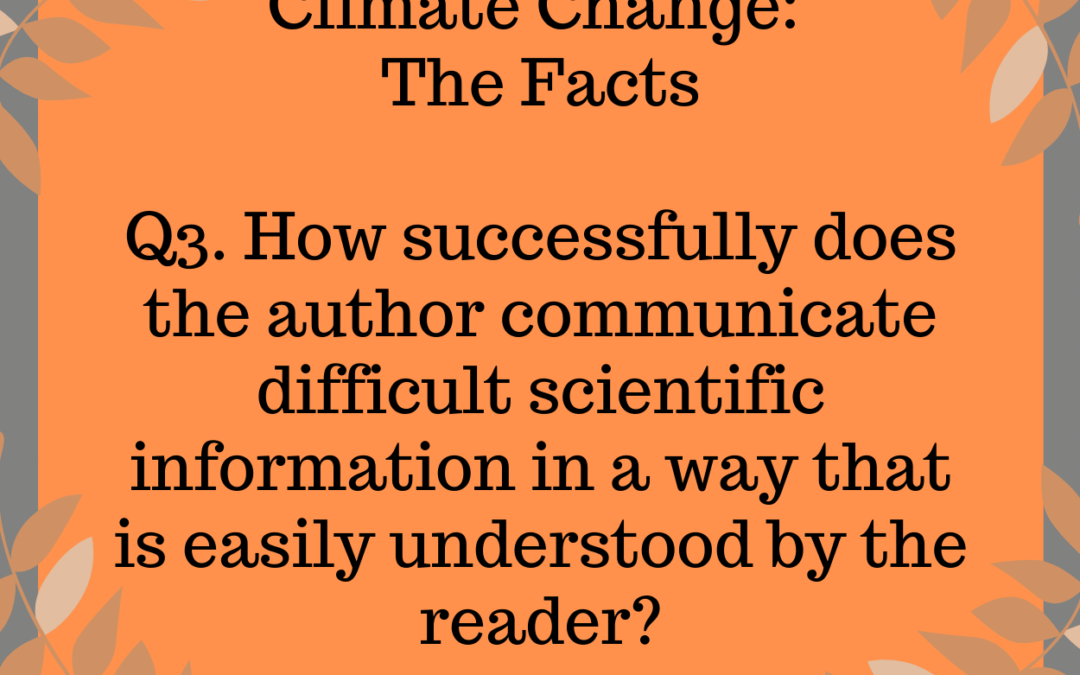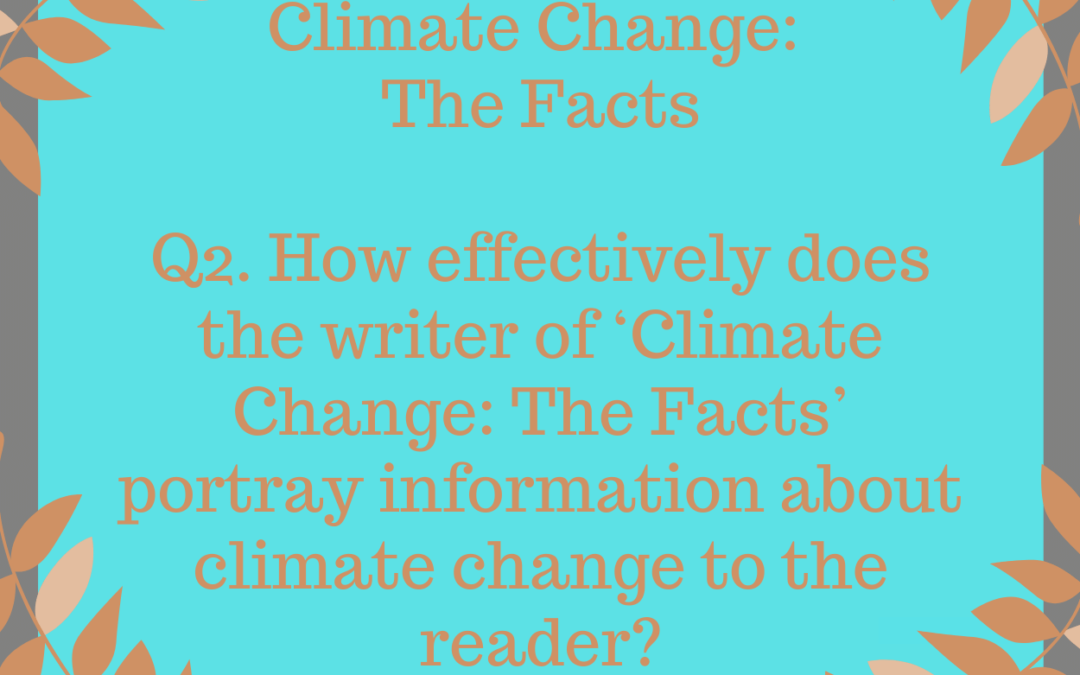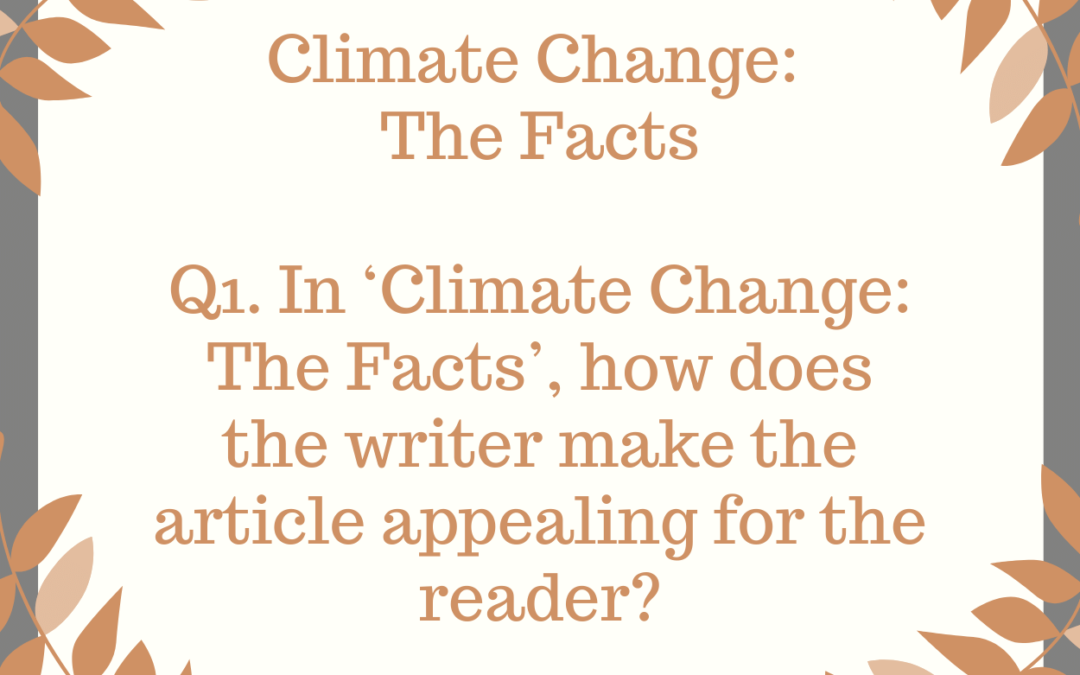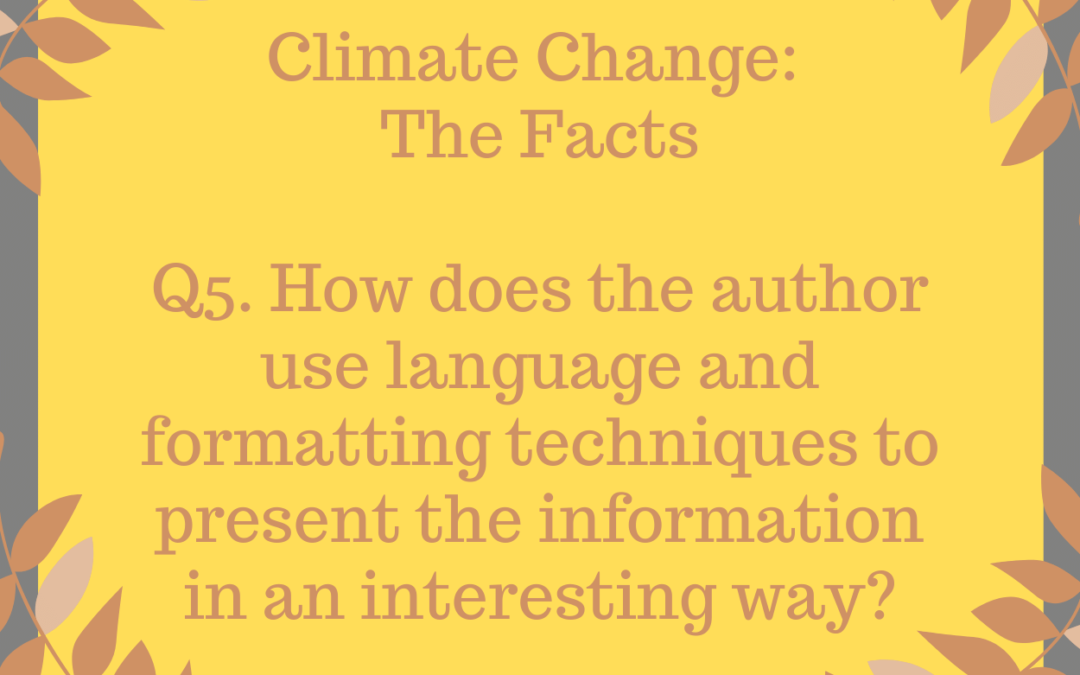
IGCSE Climate Change : The Facts Model Essays Question 05
Edexcel English IGCSE: Climate Change: The Facts
Q5. How does the author use language and formatting techniques to present the information in an interesting way?
Edexcel English IGCSE Model Essay by an Expert
The author of ‘Climate Change: The Facts’ is describing complex scientific phenomena to a non-expert audience. Its purpose is to inform the reader about the issue of climate change in an interesting and accessible way. To do this, the author makes use of an unusual layout, helpful images and engaging language.
To make the article interesting to read, the author uses an unusual question-and-answer format. The heading contains several questions, which pique the reader’s interest, as they then want to find out the answers. The use of questions as subtitles throughout the text also create an inquisitive tone, suggesting that the article is answering queries which many people, including the reader, may have about climate change. This is an interesting and unusual layout, which creates the impression of an informal interview. This lends authority to the text, since it sounds like an expert explaining the phenomena to a layperson. The author also uses images to make the article interesting. With the use of bright, primary colours, the images are attractive to the reader. They also provide an alternative way of understanding the content of the article; having more than one medium through which to understand difficult concepts ensures that the reader doesn’t become bored because they don’t understand them.
Language techniques are also employed to maintain the reader’s interest. Technical language is used to explain some phenomena, but the writer avoids using too much jargon in one paragraph. To keep the tone light and interesting to a non-expert, the writer incorporates non-scientific language into these technical descriptions. For example, when describing how carbon dioxide causes increased global temperatures, she writes that oceans and trees “mop up some of the heat”. This is very non-scientific language, but provides an easy-to-comprehend image in the reader’s mind. Similarly, when describing methane, she uses an idiom – “nasty sting in its tail” – and colloquial language – “hangs around” –to keep the tone light-hearted and engaging.
The writer also keeps the article interesting by engaging the reader’s emotions. Although the tone of the article attempts to be generally light-hearted, the writer is describing a potentially frightening issue, and emotive vocabulary ensures that the reader recognises the seriousness of the situation. For example, alliteration is used in “relentless rise” and assonance in “sky high”, creating a sense of drama as the writer describes the unstoppable force of climate change. Directly referring to emotions, the phrase “scientists fear” is used several times throughout the article; the fact that experts are frightened by the impact of climate change inevitably also causes anxiety in the reader.
Although describing a potentially dry and depressing subject, the writer succeeds in portraying the information in an interesting and engaging way, encouraging the reader to take interest in this important and topical matter.



